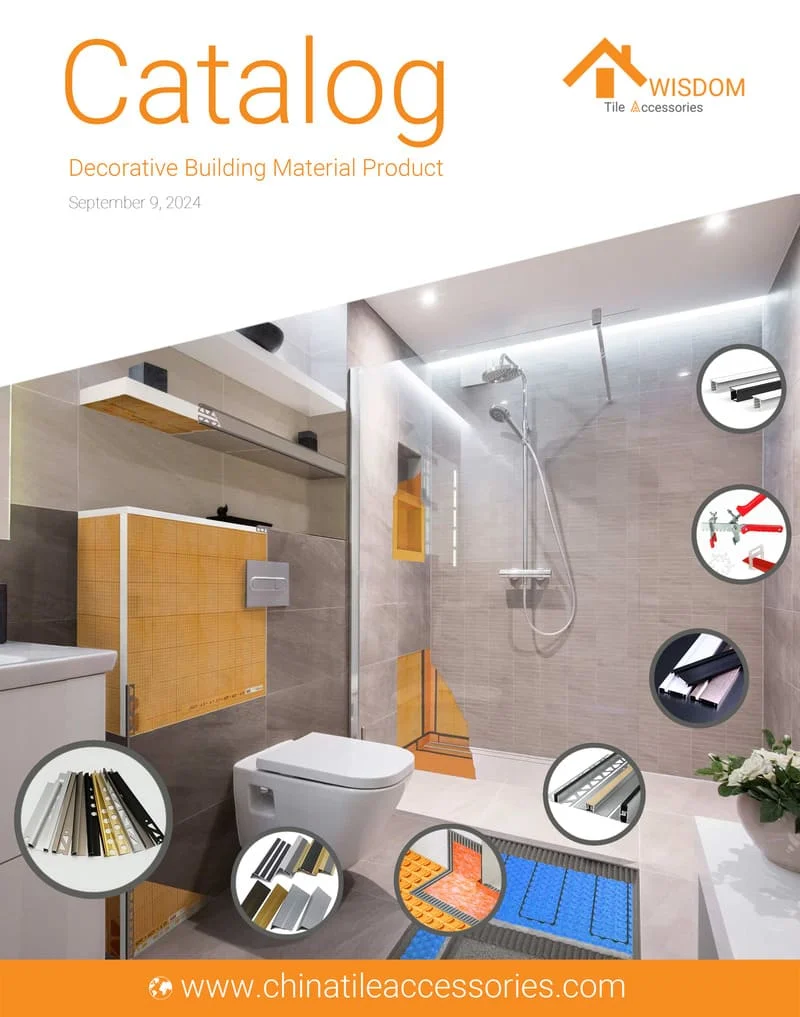Introduction
Every tiling project, regardless of its size or scope, relies heavily on precision. One critical aspect of this precision is the consistent spacing between each tile. Enter the humble, yet indispensable tool: rubber tile spacers.
Choosing the right size of these spacers is paramount to achieving the desired result. This article will delve into the realm of rubber tile spacers, providing expert tips on how to select the appropriate size to ensure your next tiling project is a resounding success.
What are Rubber Tile Spacers and Why are They Important?
Definition and Use of Rubber Tile Spacers
Rubber tile spacers, often also known as "T" tile spacers or part of a tile leveling system like the "T" lock, are small cross-shaped tools used to ensure equal spacing between tiles.
These spacers come in various sizes, including 1/4 inch tile leveling spacers or 3/16 tile leveling system spacers, and are essential for maintaining straight lines during the installation process. They're often made from flexible rubber or plastic, with rubber being the more durable choice.

The Role of Rubber Tile Spacers in Achieving Uniform Grout Lines
Uniformity in tiling is synonymous with professionalism, and rubber tile spacers play an indispensable role in ensuring this consistency. They help in creating even and straight grout lines, which is a hallmark of expert tiling.

They are especially important for wall tiling projects, where gravity can cause tiles to slip, making "T" tile spacers or horseshoe tile spacers ideal choices for maintaining even spacing.
Choosing the right size spacer is critical. They define the width of the grout lines, and ultimately, the aesthetic of your tiling project. Too large, and the tile design might look grid-like; too small, and the tiles may appear cramped. Therefore, the process of selecting the right spacer size is an art and science in itself.
In addition to ensuring aesthetic appeal, rubber tile spacers also have practical benefits. They provide room for the tiles to expand and contract with temperature changes, preventing cracks or dislodgement. Moreover, they help avoid tile lippage – a situation where the edges of the tiles are not flush with each other, which can affect the final look and pose a tripping hazard.
From the discussion so far, it is clear that rubber tile spacers – whether you choose a "T" lock system, horseshoe spacers, or traditional crossshaped spacers – have an important role in the final look and durability of your tiling project. Choosing the right size is critical, and our upcoming sections will provide expert tips to guide you through this selection process.
Factors to Consider when Choosing Tile Spacer Size
Choosing the right size of rubber tile spacers or "T" tile spacers is not a one-size-fits-all decision. Various factors come into play, including the type and size of the tile, as well as your desired grout line width. Let's dive into each of these factors to help you make an informed decision.
Type of Tile
The kind of tile you're installing significantly influences the choice of your tile spacer size. Different materials, such as ceramic, porcelain, or glass, have unique characteristics that can affect the spacer size.
Ceramic Tiles: These are typically easier to cut and install. Therefore, you could opt for smaller rubber tile spacers, such as the 3/16 tile leveling system or even smaller.
Porcelain Tiles: These are denser and more durable. They often call for larger spacers, like 1/4 inch tile leveling spacers, to account for slight size variations.
Glass Tiles: These require a delicate touch due to their transparency and the visibility of adhesive through the tile. A smaller spacer, like the 3/16 tile leveling system, would usually be preferred here.
Size of the Tile
The size of your tile is another crucial factor to consider when deciding on the size of your tile spacer. Here's a simple guideline:
Small Tiles (up to 4 inches): Small tiles generally work best with smaller spacers such as 1/16 or 1/8 inch. This ensures a tighter grout line, which is more visually appealing with smaller tiles.
Medium Tiles (4 to 15 inches): For medium-sized tiles, 3/16 or 1/4 inch tile leveling spacers are typically a good choice. These larger spacers help maintain consistent grout lines across a larger surface.
Large Tiles (15 inches and above): With large format tiles, larger spacers like 3/8 or 1/2 inch can be used. The larger grout lines can help accommodate any slight inconsistencies in tile size.

Desired Grout Line Width
Your desired grout line width is a matter of personal preference and aesthetic, but it also impacts your spacer size. For a more modern, seamless look, you might opt for smaller grout lines, requiring smaller spacers such as the "T" tile leveling system or horseshoe tile spacers. For a more traditional look, larger grout lines (and therefore larger spacers) might be preferred.
Consider the overall design aesthetic of your space when deciding on grout line width. Small grout lines can create a sleek, continuous look, while larger grout lines can add a rustic, grid-like appeal.
In conclusion, understanding these factors – type of tile, tile size, and desired grout line width – will guide you towards choosing the best tile spacers for your project, be they "T" tile spacers, rubber tile spacers, horseshoe tile spacers, or a tile leveling system like "T" lock. Stay tuned for the next section where we'll share expert tips on making this important decision.
Expert Tips on Choosing the Right Rubber Tile Spacer Size
Selecting the correct size of rubber tile spacers or "T" tile spacers can dramatically affect the quality and appearance of your tiling project. Here are some expert tips to guide you:

Tip 1: Always Do a Test Layout
One of the most effective ways to choose the right size of tile spacer is to do a test layout. Arrange a few tiles on a flat surface, using the spacers you're considering, be they horseshoe tile spacers, a tile leveling system like "T" lock, or traditional rubber tile spacers.
This dry run allows you to see how the tiles fit together and how the grout lines look. It's especially useful for larger tiles where 1/4 inch tile leveling spacers or even larger might be required.
The importance of this step cannot be overstated. The visual representation of the final project can help you decide if you're happy with the size of the grout lines and the overall look.
Tip 2: Consider the Aesthetics
The aesthetic of your tiling project greatly depends on the grout line width, which is directly affected by your choice of spacer size. For example, smaller spacers, such as the 3/16 tile leveling system, can create a more seamless look, which is ideal for modern designs or small tiles.
On the other hand, larger spacers, like the 1/4 inch tile leveling spacers, create wider grout lines, giving a more traditional, grid-like look.
The color and pattern of your tiles also play a significant role. If the tiles have intricate patterns, smaller grout lines might let the design shine. If the tiles are plain, larger grout lines might add a touch of visual interest.
Tip 3: Factor in the Manufacturer’s Recommendations
Each tile manufacturer usually provides guidelines about the minimum grout joint width, which can guide your choice of tile spacer. It's essential to check these guidelines because some tiles might have slight size variations, requiring larger spacers for a successful installation.
Manufacturers’ recommendations can serve as a starting point, but you should still consider the other factors we’ve discussed. Your aesthetic preference, the tile type and size, and the practicalities of your specific project should all play into your final decision.
Tip 4: Take into Account the Surface Area
The size of your project area can also affect your choice of tile spacer size. Large surface areas might require larger spacers to account for any inconsistencies in the surface level or tile size. Using larger spacers, such as 1/4 inch tile leveling spacers or the "T" lock tile leveling system, can help ensure your grout lines remain straight over a large area.
Conversely, for smaller surfaces, especially walls, the best tile spacers might be smaller ones, which can offer better control over the tile alignment and minimize slippage.
In conclusion, choosing the right rubber tile spacer size involves careful consideration of the factors we've discussed in this article. With these tips, you're now well-equipped to make an informed decision and take your tiling project to the next level.
Common Mistakes to Avoid when Using Rubber Tile Spacers
Despite the significant role they play in achieving professional-looking tile installations, rubber tile spacers or "T" tile spacers can sometimes be tricky to handle. Here are some common mistakes to avoid:
Leaving Spacers In: Rubber tile spacers, including horseshoe tile spacers and "T" tile spacers, should always be removed before grouting. Leaving them in can compromise the grout's integrity and aesthetics.
Choosing the Wrong Size: As discussed, the size of your tile spacer, whether a 3/16 tile leveling system or 1/4 inch tile leveling spacers, plays a massive role in the final look of your project. Carefully consider factors like tile size, type, desired grout line width, and aesthetic preferences when choosing your spacer size.
Ignoring Manufacturer’s Recommendations: As much as the tile spacer size depends on the project specifics, ignoring the tile manufacturer's recommendations can lead to disappointing results. Always take into account their guidelines.
Not Doing a Test Layout: This step gives you a real-world representation of what your project will look like. Skipping it might leave you with undesirable results after you've already invested time and effort into your project.
Conclusion
Choosing the right size of rubber tile spacers or "T" tile spacers is a critical aspect of tile installation. It influences the aesthetic appeal of your space, the alignment of the tiles, and the longevity of the installation. From understanding the role of tile spacers to factors like tile type and size, aesthetic preference, manufacturer’s guidelines, and the surface area, it's evident that the right selection goes beyond a simple random choice.
Whether you're installing small ceramic tiles with a 3/16 tile leveling system or large porcelain tiles requiring 1/4 inch tile leveling spacers, we hope this guide proves invaluable. If you found this article helpful, feel free to share it, leave a comment, or reach out for more information. We appreciate your feedback and would love to assist further with your tiling needs.
Call to Action
Want to learn more about tiling essentials? Check out our other blog posts for more expert advice and insider tips on everything from the best tile spacers for walls to advanced tiling techniques. If you're about to embark on a new tiling project, explore our range of high-quality tiling tools and accessories, including various tile spacers and tile leveling systems. Our goal is to help you achieve the best possible results on your tiling projects.


